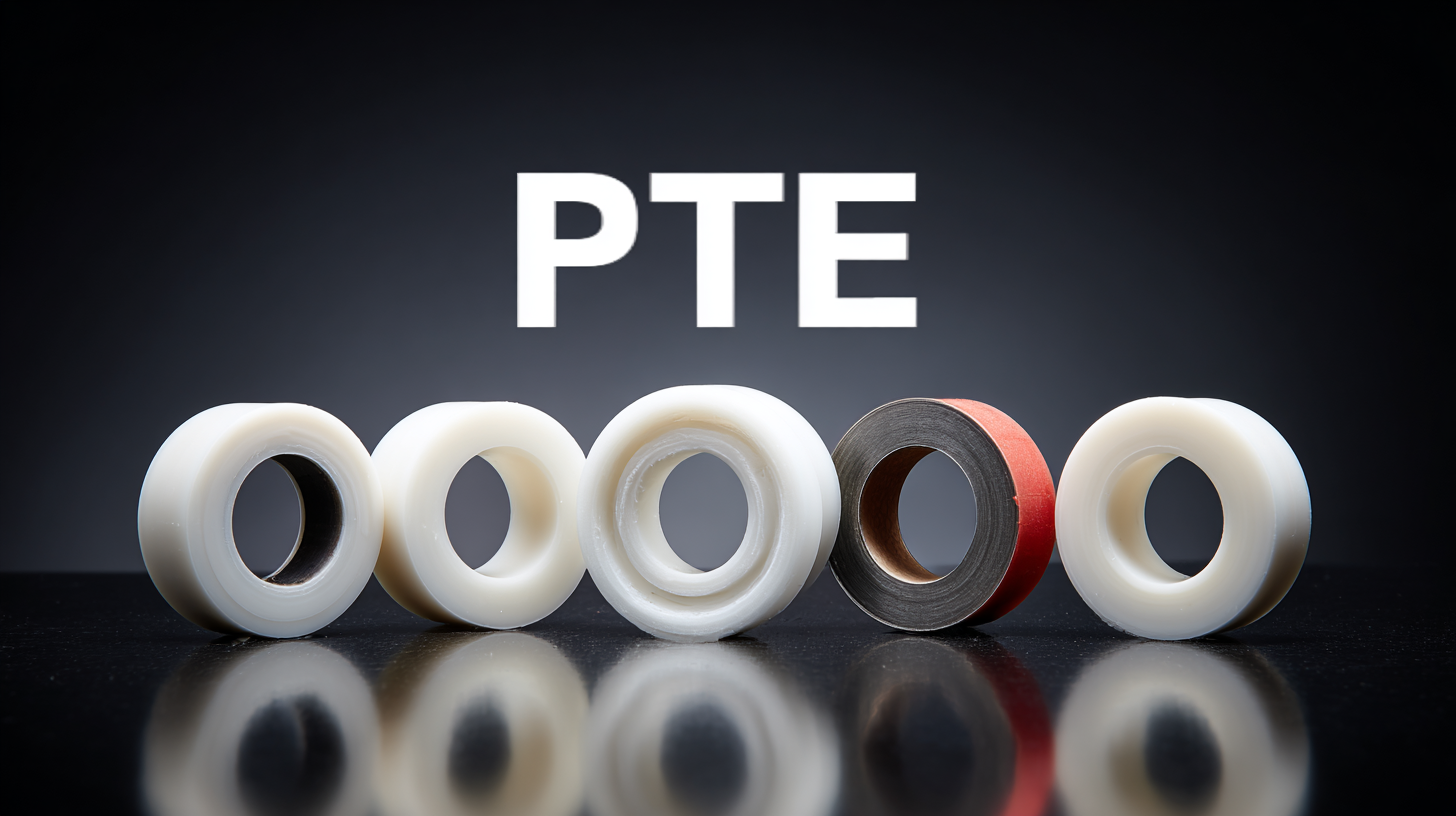


As industries continue to evolve, the demand for advanced sealing solutions grows alongside it. PTFE gasket material, known for its outstanding chemical resistance and high-temperature stability, remains a staple in various applications, from chemical processing to pharmaceuticals. However, as we move towards 2025, emerging trends reveal a shift in focus towards innovative alternatives and enhanced functionalities within PTFE materials. This blog explores the latest developments in PTFE gasket materials, delving into new formulations, manufacturing techniques, and sustainability concerns. By examining these trends and alternatives, we aim to equip professionals with the insights needed to select the best sealing solutions for their specific requirements, ultimately driving efficiency and reliability in their operations. Join us as we navigate the transformative landscape of PTFE gasket materials and discover what the future holds.

As we look towards 2025, the landscape of PTFE gasket materials is set to evolve significantly, driven by emerging innovations aimed at addressing the pressing regulatory concerns associated with per- and polyfluoroalkyl substances (PFAS). The ongoing scrutiny over these “forever chemicals” is prompting manufacturers to explore viable alternatives. Enhanced surface coating technologies and new non-PFAS materials are on the horizon, providing options that not only meet regulatory demands but also maintain the performance standards essential for industrial applications.

To stay ahead, it is crucial for industry stakeholders to keep an eye on trends within the PTFE seals market, projected to see substantial growth in the coming years. Companies can benefit from investing in research and development to create innovative gasket solutions while ensuring compliance with evolving regulations.
Tips: Explore partnerships with research institutions to tap into the latest technologies. Regularly monitor regulatory updates to adapt product strategies accordingly. Engaging in collaborative discussions with other stakeholders can lead to shared insights and accelerated innovation in gasket materials.
The landscape of gasket materials is evolving, with a notable shift towards alternatives to traditional PTFE. Recent industry reports indicate that alternative materials, such as Bio-Based Polymers and Graphene-filled composites, are gaining traction due to their superior thermal stability and environmental benefits. According to a 2023 MarketsandMarkets report, the market for innovative gasket materials is projected to grow by 6.8% annually, underscoring the industry’s pivot towards sustainable solutions.
One of the most significant advantages of these alternative materials is their ability to withstand extreme temperatures and aggressive chemicals without degrading. For instance, studies have shown that Graphene composites offer enhanced mechanical strength and flexibility, making them suitable for high-pressure applications. Additionally, bio-based materials, derived from renewable resources, not only contribute to reduced carbon footprints but also meet the increasing demand for eco-friendly manufacturing practices. This trend is further supported by a 2023 study from the International Gasket Association, which indicates that 45% of manufacturers are now prioritizing eco-friendly alternatives in their sourcing strategies.

The use of
PTFE gasket materials
is poised for significant evolution by 2025, driven by various market factors that are reshaping the industry. One of the primary market drivers is the growing demand for
environmentally friendly materials.
As businesses and consumers become more environmentally conscious, the pressure is on manufacturers to innovate PTFE formulations that minimize ecological impact while maintaining performance. This has led to the exploration of bio-based additives and alternative polymers that complement or replace traditional PTFE without compromising its sealing capabilities.
Another influential factor is the increasing application of PTFE gaskets in specialized industries such as
pharmaceuticals and
food processing, where stringent
safety and quality regulations are paramount. As these sectors expand, the need for highly reliable and compliant gasket materials becomes critical. Companies are investing in research and development to create innovative PTFE blends that meet these regulatory standards while also improving thermal and chemical resistance.
Moreover, advancements in manufacturing technologies are facilitating the production of
customized gasket solutions that address specific industry requirements, further driving market growth and diversification.
As the manufacturing sector leans increasingly towards sustainability, the development of eco-friendly PTFE gasket materials is set to redefine industry standards by 2025. Recent reports indicate that the global demand for sustainable gaskets is expected to grow at a compound annual growth rate (CAGR) of 6.4% through the next decade. This rising trend emphasizes the need for manufacturers to explore alternatives that minimize environmental impact while maintaining product performance.
Innovations in biodegradable materials and production processes are at the forefront of these developments. Companies are now experimenting with plant-based fillers and recycled content in PTFE gaskets, which can reduce their carbon footprint significantly. A study by the Environmental Protection Agency states that utilizing recycled materials can decrease greenhouse gas emissions by approximately 10% compared to traditional manufacturing methods. Moreover, advancements in technology are enabling the creation of high-performance gaskets that not only meet stringent operational demands but also support the transition to a circular economy.
Furthermore, industry leaders are beginning to prioritize the lifecycle assessments of their products. Research indicates that a significant portion of a gasket’s environmental impact arises during production and disposal phases. Therefore, enhancing the recyclability of PTFE gaskets is essential. By incorporating eco-friendly practices into every stage of production, companies can contribute to a more sustainable future while addressing the ever-increasing regulatory pressures surrounding environmental practices.
| Dimension | Details | 2025 Insights |
|---|---|---|
| Material Composition | Reinforced PTFE and Bio-based materials | Increased focus on recyclable materials to reduce environmental impact |
| Sustainability Metrics | Lifecycle analysis and carbon footprint assessment | Majority of new products to meet stringent sustainability certifications |
| Innovative Manufacturing Techniques | 3D printing and additive manufacturing | Expect broader adoption for custom gaskets and reduced waste |
| Cost Efficiency | Use of alternative raw materials | Potential reduction in manufacturing costs and improved margins |
| Regulatory Compliance | Adherence to environmental regulations | Stricter compliance expected, pushing innovation in materials |
The PTFE gasket market is poised for significant transformation as new challenges and opportunities emerge in 2025. One notable challenge is the rising demand for sustainable materials, prompting manufacturers to explore eco-friendly alternatives to traditional PTFE. This shift not only seeks to reduce environmental impact but also meets the rigorous regulatory standards that are becoming more prevalent across various industries. Companies that adapt to these changing demands will not only enhance their market viability but also contribute to the global effort of sustainability.
In addition to sustainability, advancements in technology are paving the way for innovative PTFE gasket materials. Manufacturers are investing in research and development to create gaskets with improved performance characteristics, such as increased temperature resistance and enhanced chemical compatibility. These innovations are essential for meeting the evolving needs of industries like petrochemical, automotive, and aerospace, where reliability and durability are paramount. The integration of smart materials and design techniques can offer functional benefits, further pushing the boundaries of what PTFE gaskets can achieve in a competitive market.